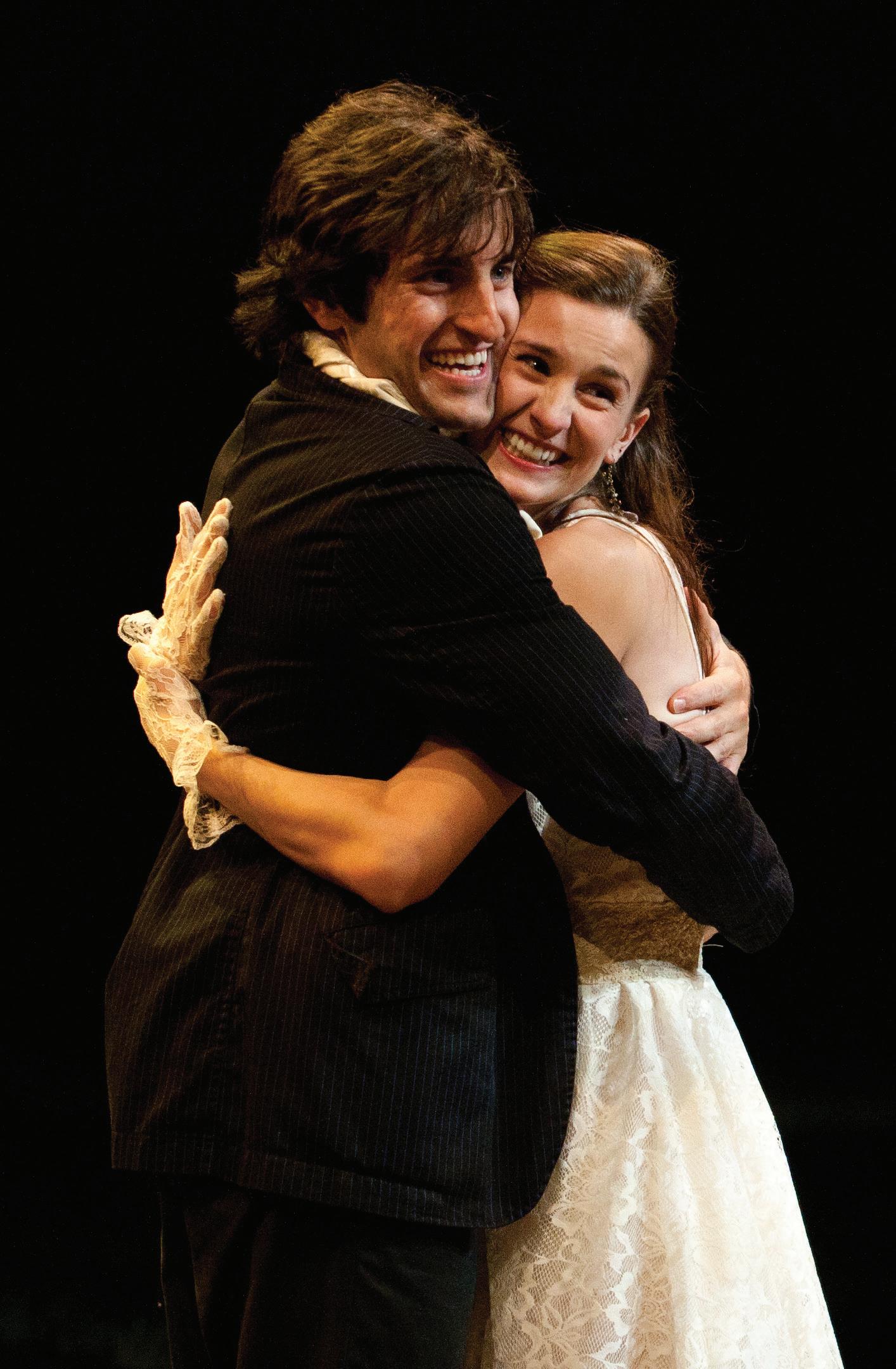
2 minute read
Casting a Spotlight on Education
from 2019 Season Program
by HVSF
Carl Howell, Actor and HVSF Teaching Artist who previously appeared under the Theater Tent in 2012 as Romeo, discusses the power of Shakespeare performance to ignite student imaginations…
The Chappaqua Summer Scholarship Program (CSSP) is a three-year, by-application-only summer school for motivated students from under-resourced New York City high schools. With a focus on academic and cultural enrichment, CSSP offers its students a wide array of creative experiences, including workshops led by HVSF teaching artists. In 2018, our program focused on The Taming of the Shrew, and I witnessed 22 students become more themselves. They found identity and ownership and community through the words, ideas, and themes set forth in the play.
I’ve devoted a large portion of my life to reading, performing, and teaching Shakespeare, and I’d love to share a little of what I’ve learned:
Reading it can be hard,
especially if you’re 15 and this is the first time you’ve ever looked at a Shakespeare play. It’s a bit like learning a new language.
It’s not boring at all.
Even though this is a common misconception by students (and some adults!). Here’s why…
Shakespeare is math.
He writes in a rhythm, in a set structure. With practice and courage, if you allow your brain and heart to sync up with that rhythm, it immediately becomes more clear and more exciting.
Shakespeare is science.
Before you can act it, you need to investigate the words you’re actually saying.
Shakespeare is gym class.
Hamlet says, “suit the action to the word, the word to the action.” It’s not just your voice and some text; it’s a full-body expression of a feeling that’s so much larger than anything you’ve felt. It takes cardio, articulation, imagination, and energy!
When you get it, you get it.
At CSSP this past July, they got it. I’m reminded of two students, Joshua Oppong-Peprah and Lisa Haye, who performed an amazing Kate/Petruchio exchange from The Taming of the Shrew in front of the class—with about 45 seconds of preparation. We read the scene once, gave them an overview of who they were and what they were trying to achieve, and they flew.

Through their own instincts, intelligence, and courage, they perfectly embodied a sense of competition in the language, the need for listening before you can respond, and that words are full of power and possibility for change. The class went wild… the good kind of wild. They heard it, saw it, felt it, and were moved by it. There was shouting, cheering, real laughter. There were gasps. It was one of the best moments of my creative life.
On the final day of the program, we performed for students’ host families and CSSP faculty. We also assigned third-year students to emcee, introducing themselves and their classmates, and leading a public discussion on the more complicated themes of the play: gender roles in marriage, a woman’s “duty” and obligation of “obedience” to her husband, a man’s tendency to “tame” a woman into submission. What initially frightened them (“what do you mean, our opinions on the play?!”) challenged them to speak up. What’s more, it forced them to make decisions about complicated issues and defend them against their classmates in a respectful, yet passionate, manner. I saw first-hand how Shakespeare’s body of work can teach, inspire, and ignite imaginations for good.









